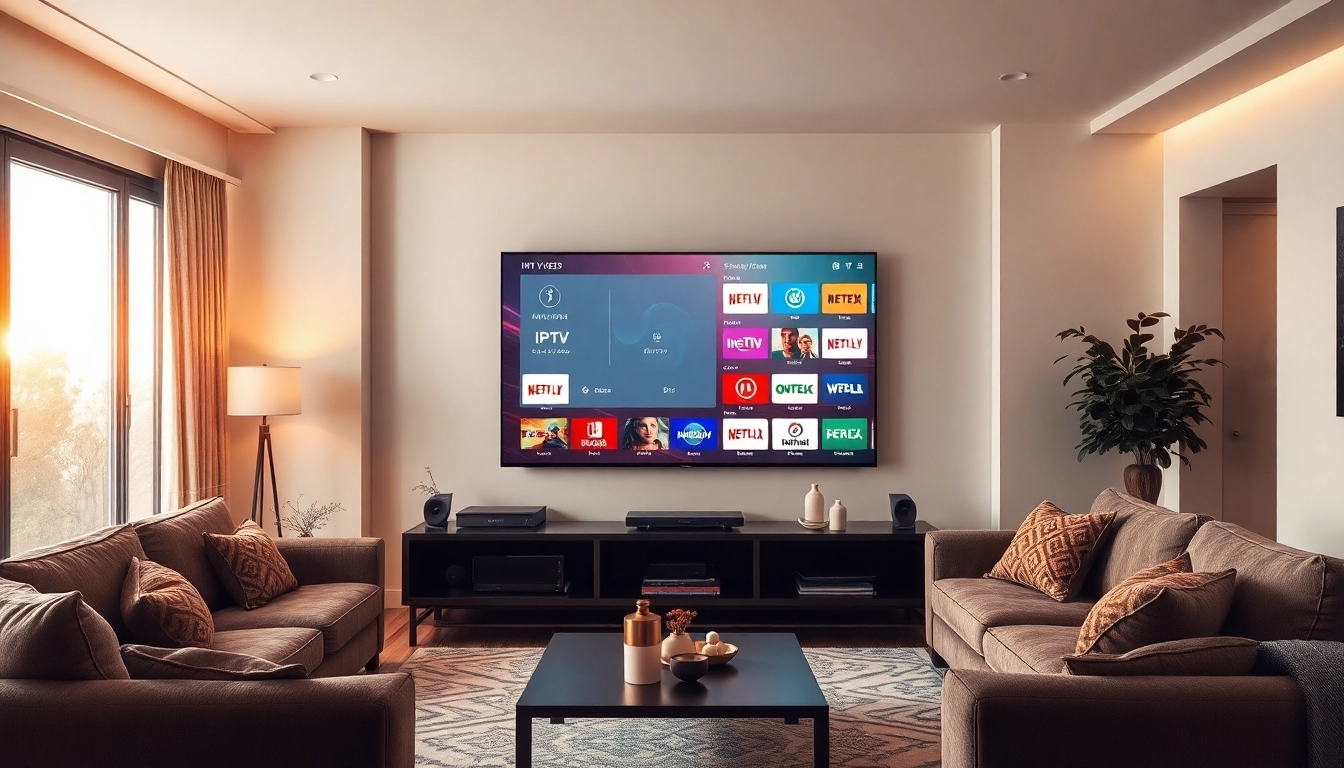Understanding Website Design Basics
Website design is a multidimensional discipline that blends creativity with technical skills to produce visually appealing and functional websites. It encompasses various fields, including web graphic design, user interface design, and search engine optimization (SEO), among others. Effective website design is not merely about aesthetic appeal; it’s also about enhancing user experience and ensuring functionality. In this comprehensive guide, we will explore the fundamental concepts of website design, including key elements, design principles, responsive techniques, SEO best practices, and emerging trends. Let’s dive in to understand how each aspect contributes to creating stunning and efficient websites.
Key Elements of Effective Website Design
Effective website design hinges on a few key elements that can significantly enhance user engagement and retention. These elements include:
- Navigation: A well-structured navigation system helps users find the information they need without frustration. It should be intuitive, with clearly labeled sections that aid in guiding visitors through the site.
- Content: Engaging and relevant content is critical. It should be visually appealing while also being concise and easy to digest. Quality content keeps users on the website longer and encourages them to share it.
- Visual Hierarchy: The layout should direct the user’s attention to the most important aspects first. This involves strategically placing elements like headings, images, and calls to action to guide users naturally through the content.
- Call to Action (CTA): Effective CTAs are essential for directing visitors’ next steps, whether it be to sign up for a newsletter, make a purchase, or contact the business. These should be visually distinct and strategically placed within the content.
The Importance of User Experience in Website Design
User experience (UX) is a pivotal aspect of website design that focuses on how users interact with a site. It encompasses several elements, including usability, accessibility, and interaction design. A website that prioritizes UX can create a positive impression and encourage repeat visits. Key considerations include:
- Loading Times: Slow loading times can deter users. Optimizing images, using efficient code, and leveraging content delivery networks can enhance speed.
- Mobile Compatibility: With a significant number of users accessing websites via mobile devices, ensuring the site is responsive is crucial for meeting user expectations.
- Accessibility: A website should cater to users with disabilities. This involves optimizing for screen readers and ensuring that the site is navigable without a mouse.
Common Mistakes to Avoid in Website Design
While designing a website, it’s important to avoid common pitfalls that can lead to a poor user experience. Here are several mistakes to watch out for:
- Cluttered Layout: Overloading a page with content or design elements can overwhelm users and obscure the message. A clean, minimalist approach often yields better results.
- Inconsistent Styling: Using inconsistent fonts, colors, and styles can create a disjointed experience. Maintaining a cohesive aesthetic across all pages is important.
- Poorly Structured Content: Content should be organized logically. Implementing headings and subheadings makes it easier for users to navigate and understand the information presented.
Design Principles for a Successful Website
Balancing Aesthetics and Functionality in Website Design
A successful website strikes a balance between aesthetics and functionality. Visual appeal cannot come at the cost of usability. Key strategies include:
- Consistent Branding: Colors, logos, and styles should align with the brand’s identity. This consistency helps build recognition and trust with users.
- Functional Aesthetics: Design choices should enhance functionality rather than detract from it. This means selecting layouts and graphics that serve user needs.
How to Choose the Right Color Palette for Website Design
The color scheme of a website plays a critical role in its overall impact. Here’s how to select an effective color palette:
- Understand Color Psychology: Different colors evoke different emotions. For instance, blue can instill trust and security, while red can create a sense of urgency.
- Choose a Base Color: Start with one primary color that aligns with your brand and complements its personality. Then, select secondary colors that harmonize well with it.
- Limit Your Palette: A palette of 2-4 colors can keep the design cohesive. Too many colors can become distracting and incongruous.
The Role of Typography in Website Design
Typography is crucial in conveying the message of your content effectively. Here are some principles to follow:
- Font Selection: Choose fonts that are legible and align with your brand personality. Pairing contrasting fonts can create visual interest.
- Hierarchy: Use different font sizes and weights to establish a visual hierarchy, guiding users through the content.
- Consistency: Maintain a consistent typeface across the site to support branding and ensure readability.
Responsive Website Design Techniques
Understanding Mobile-First Approach in Website Design
The mobile-first approach is a design strategy that prioritizes mobile devices in the design process. It ensures that websites are fully functional and aesthetically pleasing on smaller screens. Important aspects include:
- Responsive Design: Use flexible grids, layouts, and media queries to allow a website to adapt to various screen sizes.
- Touch-Friendly Elements: Buttons and links should be easy to tap on mobile devices. Make sure interactive elements are adequately sized and spaced.
Testing Responsiveness in Website Design
To ensure a site is truly responsive, it should be tested across various devices and browsers. Tools for testing include:
- Browser Dev Tools: Most browsers come with built-in tools that allow you to simulate different screen sizes and resolutions.
- Responsive Testing Tools: Several online services can help check how a website appears on various devices, facilitating adjustments as needed.
Tools for Creating Responsive Website Design
Utilizing specific tools can streamline the responsive design process:
- Frameworks: CSS frameworks like Bootstrap or Foundation offer pre-designed responsive components, saving time during development.
- Design Software: Tools like Adobe XD or Figma allow designers to create responsive prototypes to visualize how a site will function across devices.
SEO Best Practices in Website Design
Incorporating SEO Elements into Website Design
Integrating SEO elements within the website design from the start can improve visibility and ranking in search engines. Key practices include:
- Optimizing Metadata: Titles, descriptions, and alt text for images should be descriptive and include relevant keywords.
- Structured Data: Implementing schema markup helps search engines understand the content and context of your pages, leading to improved indexing.
How Website Design Affects Search Engine Rankings
Website design can significantly impact search engine rankings. Considerations include:
- Mobile-Friendliness: Google uses mobile-first indexing; hence, a responsive design is crucial for favorable rankings.
- Website Speed: Load times are a critical ranking factor. Ensure the website is optimized to deliver content quickly to boost SEO.
Optimizing Load Speed in Website Design
Fast loading speed enhances user experience and SEO rankings. Here are tips to optimize speed:
- Image Optimization: Compress images appropriately without compromising quality, and use the right file formats.
- Minifying Code: Reduce the space between code elements and eliminate unnecessary comments to enhance performance.
- Using Caching: Leverage caching mechanisms to store data and reduce loading times for returning users.
Future Trends in Website Design
The Impact of AI on Website Design Innovations
Artificial intelligence (AI) is revolutionizing website design by streamlining processes and enhancing creativity. Key areas affected include:
- AI Design Tools: Tools that use AI can automate aspects of design, from layout selection to color pairing, providing suggestions based on design principles.
- Predictive Analytics: AI can analyze user behavior patterns to inform design decisions, ensuring that designs cater to actual user preferences.
Emerging Technologies in Website Design
Emerging technologies such as augmented reality (AR) and virtual reality (VR) are changing how websites are designed and interacted with:
- AR Integration: AR features can help create immersive experiences, enhancing user engagement through interactive content.
- VR Environments: Websites that leverage VR can provide visitors with unique experiences, such as virtual tours and immersive storytelling.
Creating Inclusive and Accessible Website Design
Inclusion and accessibility are increasingly important in website design. Design practices should ensure all users, including those with disabilities, can navigate and use your site:
- Accessibility Guidelines: Follow guidelines such as the Web Content Accessibility Guidelines (WCAG) to ensure compliance with accessibility standards.
- User Testing: Conduct user tests with individuals who have various abilities to identify barriers and improve accessibility.
In conclusion, crafting an effective website design requires an understanding of its fundamental principles, a commitment to user experience, and an awareness of current and future trends. By focusing on key elements, leveraging modern tools, and committing to inclusivity, designers can create websites that not only captivate users but also stand out in a competitive digital landscape. Implementing these strategies will ensure your website design is not just aesthetically pleasing but also functional, responsive, and effective in meeting your goals.



